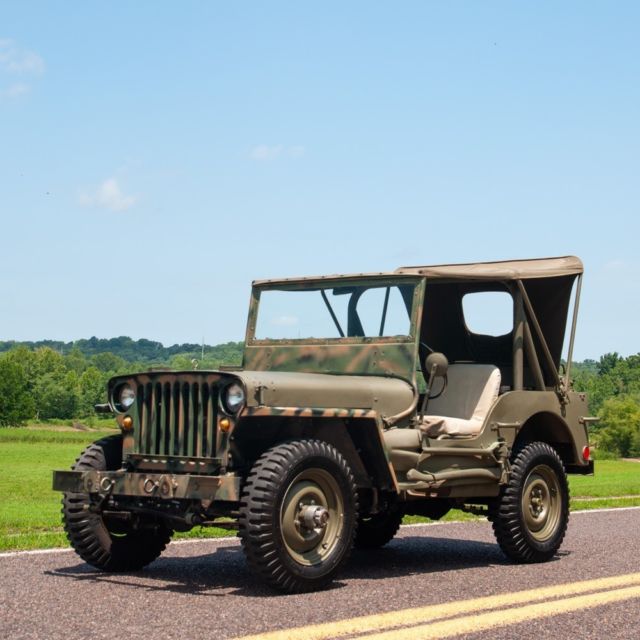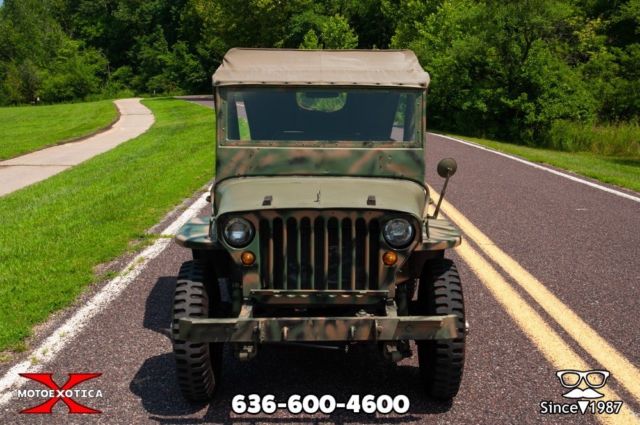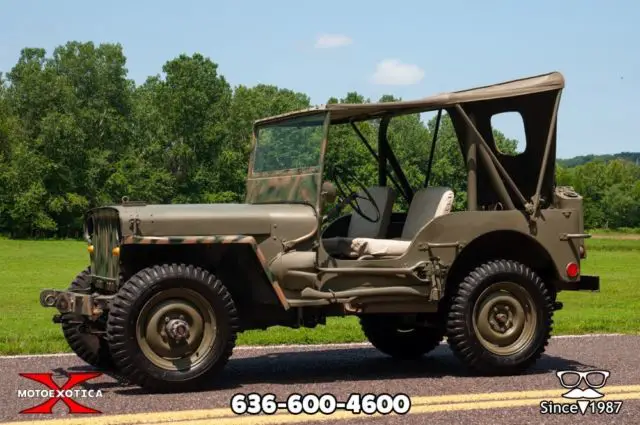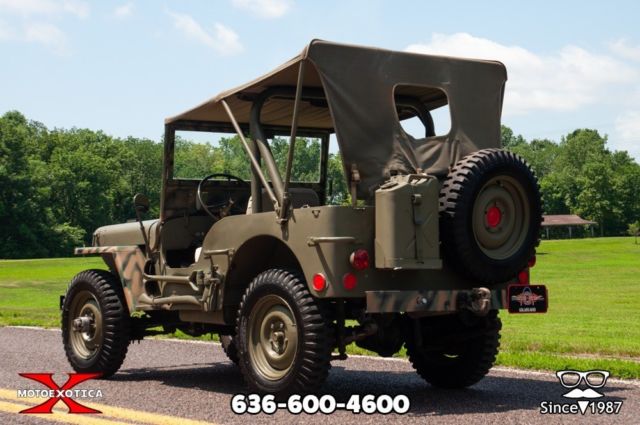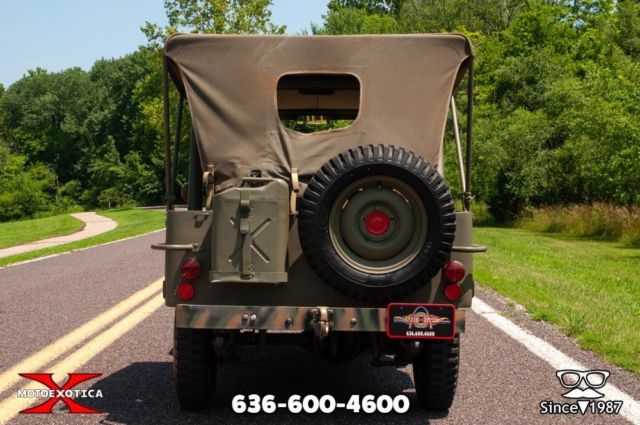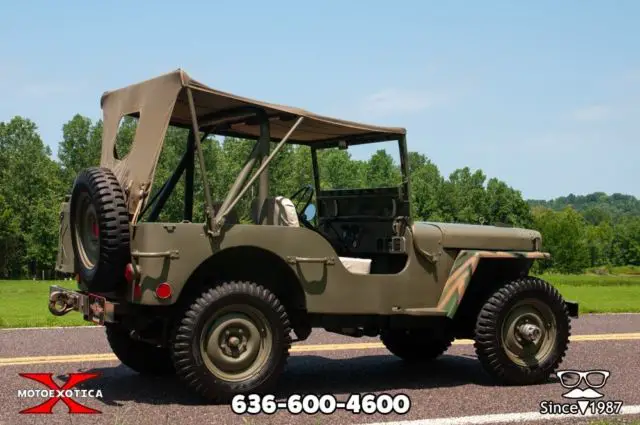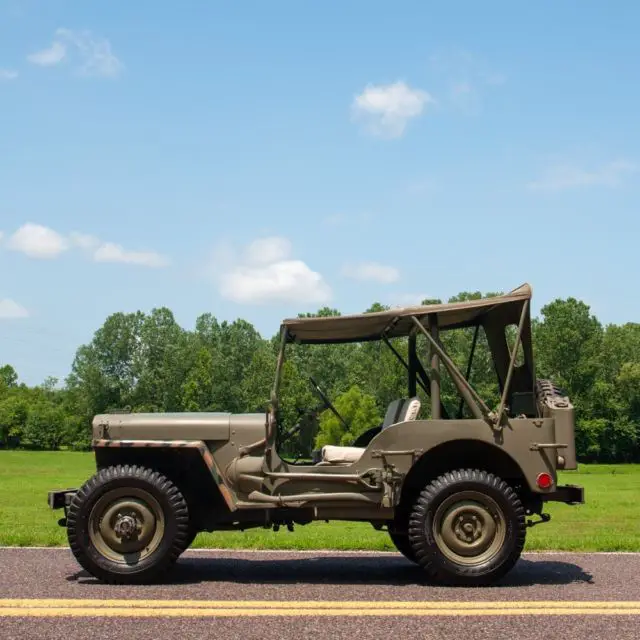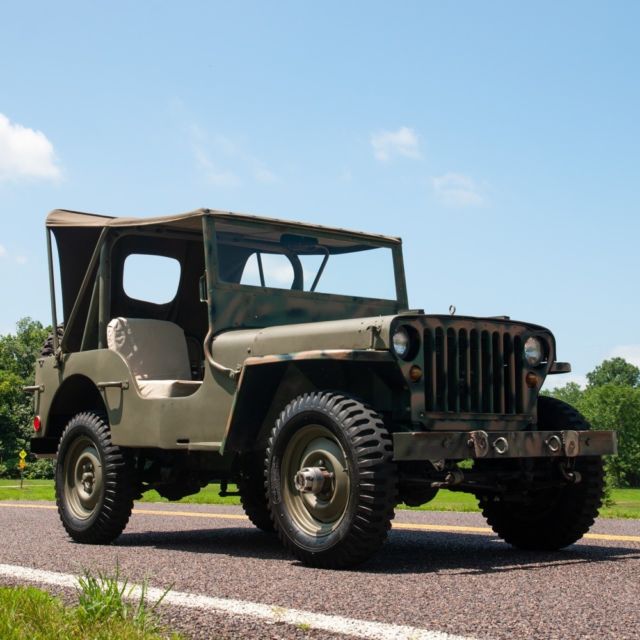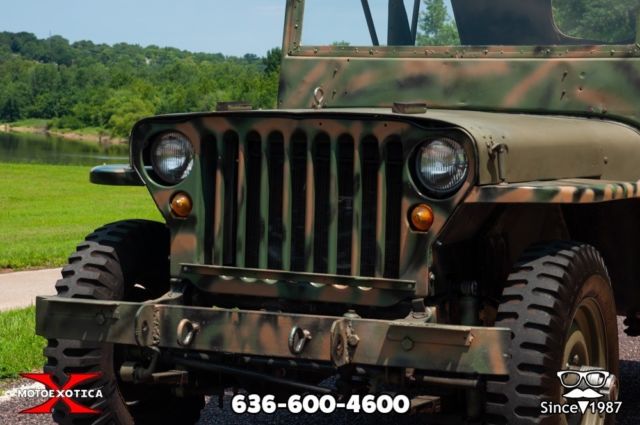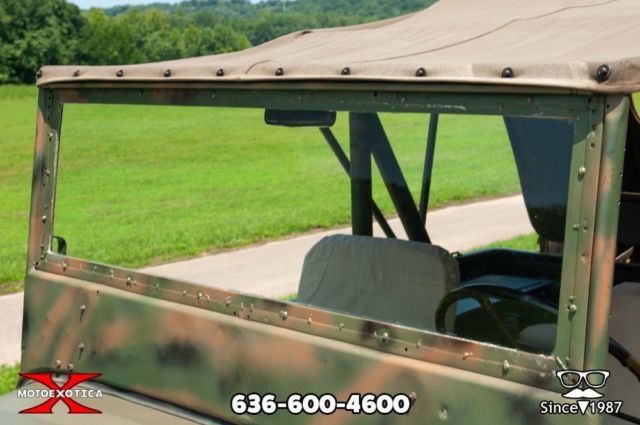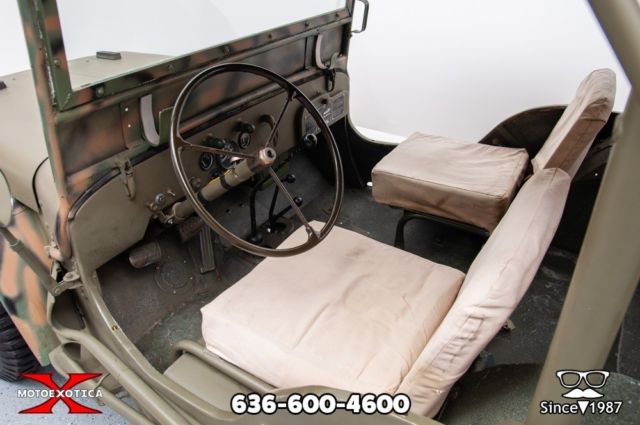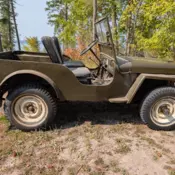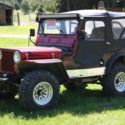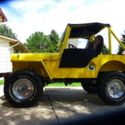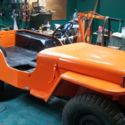1948 Jeep GPW
| Make: | Jeep |
| Model: | Other |
| Type: | Utility |
| Trim: | GPW |
| Year: | 1948 |
| Mileage: | 1 |
| VIN: | AZ276811 |
| Color: | Army Green |
| Engine: | 134 CID four-cylinder |
| Cylinders: | 4 |
| Transmission: | Three-speed Manual |
| Drive type: | RWD |
| Interior color: | Green |
| Vehicle Title: | Clear |
| Item location: | Saint Louis, Missouri, United States |
1948 Jeep Other GPW Additional Info:
1948 Jeep GPW Description1948 Jeep GPW
Vintage military Jeep, Ford GPW body under license to Willys Willys 134 CID "Go-Devll" four-cylinder, correct replacement engine Three-speed manual transmission Army Green exterior World War II-era seven-slot grille, canvas top and tow bar Fold-down rear seat with air pump; full-size spare tire mounted in rear Recent repairs to front brake drums, shock absorbers and flywheel plus recently rebuilt carburetor; the oil pan and transfer case gaskets have been replaced Shock mounts strengthened, frame reinforced and new tie rod endsFans of military vehicles will want to pay attention to this new arrival - a 1948 Jeep GPW has recently arrived at MotoeXotica Classic Cars. It is a rolling conversation piece, guaranteed to turn heads, make people ask questions and make former soldiers smile.It hails from Arizona where the previous owner had the car since 2014.
Dressed in Army Green, this Jeep's paint is in satisfactory condition, as one would expect on a vehicle of this type and age. The fold-down windshield is in decent order as well. The sardine tin on wheels has lights that look great and its bodywork is straight and solid. The engine bay is very tidy and the bumpers are in better-than-average condition.It comes complete with tools should you find yourself in need.
This Jeep rolls on green steel wheels surrounded by rubber from Specialty Tires of America, size 6.00-16LT at all four corners. The wheels are in good order while the tires are in very good condition.
Under the hood is a replacement Willys 134 CID "Go-Devil" engine linked to a three-speed manual transmission. This Jeep has had recent repairs to its front brake drums, its shock absorbers and flywheel plus it has a recently rebuilt carburetor. ODO/Speedo are inop. The oil pan and transfer case gaskets have been replaced and the shock absorber mounts have been strengthened, the frame reinforced and new tie rod ends installed.
Inside, the Jeep's seats are in satisfactory order. The rear seat folds down and there's an air pump back there. The three-spoke steering wheel is in mediocre shape, as is the shifter. The instrument panel is in satisfactory condition.
Since Bantam did not have the production capacity or fiscal stability to deliver on the scale needed by the War Department, the other two bidders, Ford and Willys, were encouraged to complete their own pilot models for testing. The contract for the new reconnaissance car was to be determined by trials. As testing of the Bantam prototype took place from September 27 to October 16, Ford and Willys technical representatives present at Holabird were given ample opportunity to study the vehicle's performance. Moreover, in order to expedite production, the War Department forwarded the Bantam blueprints to Ford and Willys, claiming the government owned the design. Bantam did not dispute this move due to its precarious financial situation. By November 1940, Ford and Willys each submitted prototypes to compete with the Bantam in the Army's trials. The pilot models, the Willys Quad and the Ford Pygmy, turned out very similar to each other and were joined in testing by Bantam's entry, now evolved into a Mark II called the BRC 60. By then the U.S. and its armed forces were already under such pressure that all three cars were declared acceptable and orders for 1,500 units per company were given for field testing. At this time, it was acknowledged the original weight limit (which even Bantam could not meet) was unrealistic and it was raised to 2,160 pounds.
For these respective pre-production runs, each vehicle received revisions and a new name. Bantam's became the BRC 40. Production began on March 31, 1941, with a total of 2,605 built up to December 6. As the company could not meet the Army's demand for 75 Jeeps a day, production contracts were also awarded to Willys and to Ford.
After reducing the vehicle's weight by 240 pounds, Willys changed the designation to "MA" for "Military" model A." The Fords went into production as "GP, "? with "G" for a "Government" type contract and "P" commonly used by Ford to designate any passenger car with a wheelbase of 80 inches.
By July 1941, the War Department desired to standardize and decided to select a single manufacturer to supply them with the next order for 16,000 vehicles. Willys won the contract mostly due to its more powerful engine (the "Go Devilâ€), which soldiers raved about, and its lower cost and silhouette. The design features in the Bantam and Ford entries which represented an improvement over Willys' design were then incorporated into the Willys car, moving it from an "A" designation to "B, "? thus the "MB" nomenclature. Most notable was a flat wide hood, adapted from Ford GP.
By October 1941, it became apparent Willys-Overland could not keep up with the production demand and Ford was contracted to produce them as well - exactly according to Willys blueprints, drawings, specifications and patents. The Ford car was then designated GPW, with the "W" referring to the "Willys" licensed design. During World War II, Willys produced 363,000 Jeeps and Ford some 280,000. Approximately 51,000 were exported to the U.S.S.R. under the Lend-Lease program. Ford and Willys faithfully produced jeeps with fully interchangeable parts and components, in part facilitated by using components from common sources - frames from Midland Steel, wheels from Kelsey-Hayes, axles and transfer-cases from Spicer, for instance.
On 7 April 1942, U.S. patent no. 2278450 for the WW II jeep, titled "Military vehicle body" was awarded to the U.S. Army, which had applied for it, listing Colonel Byron Q. Jones as the inventor on the patent, though he performed no work on the design of the vehicle. Filed on 8 October 1941, stating in the application that "The invention described herein, if patented, may be manufactured and used by or for the Government for governmental purposes without the payment of any royalty thereon, "? the patent relates to a "small car vehicle body having convertible features whereby it is rendered particularly desirable for military purposes" and describes the purpose of the vehicle is to essentially create an automobile equivalent of a Swiss Army knife.
If you're looking for the predecessor to modern Jeeps, the Humvee and other four-wheel-drive vehicles, look no further than this Jeep GPW at MotoeXotica Classic Cars. It would be a fine addition to anyone's collection, civilian or military.
VIN: AZ276811
This car is currently located at our facility in St. Louis, Missouri. Current mileage on the odometer shows 64 miles. It is sold as is, where is, on a clean and clear, mileage exempt title. GET OUT AND DRIVE!!!
PLEASE CLICK HERE TO VIEW OUR YOUTUBE VIDEO!!!!!!
Or Copy & Paste the Link Below to Watch Video:
youtu.be/-nZ_1CDQiJo
Note: Please see full terms and conditions listed below that pertain to the purchase of any said vehicle, thank you.
